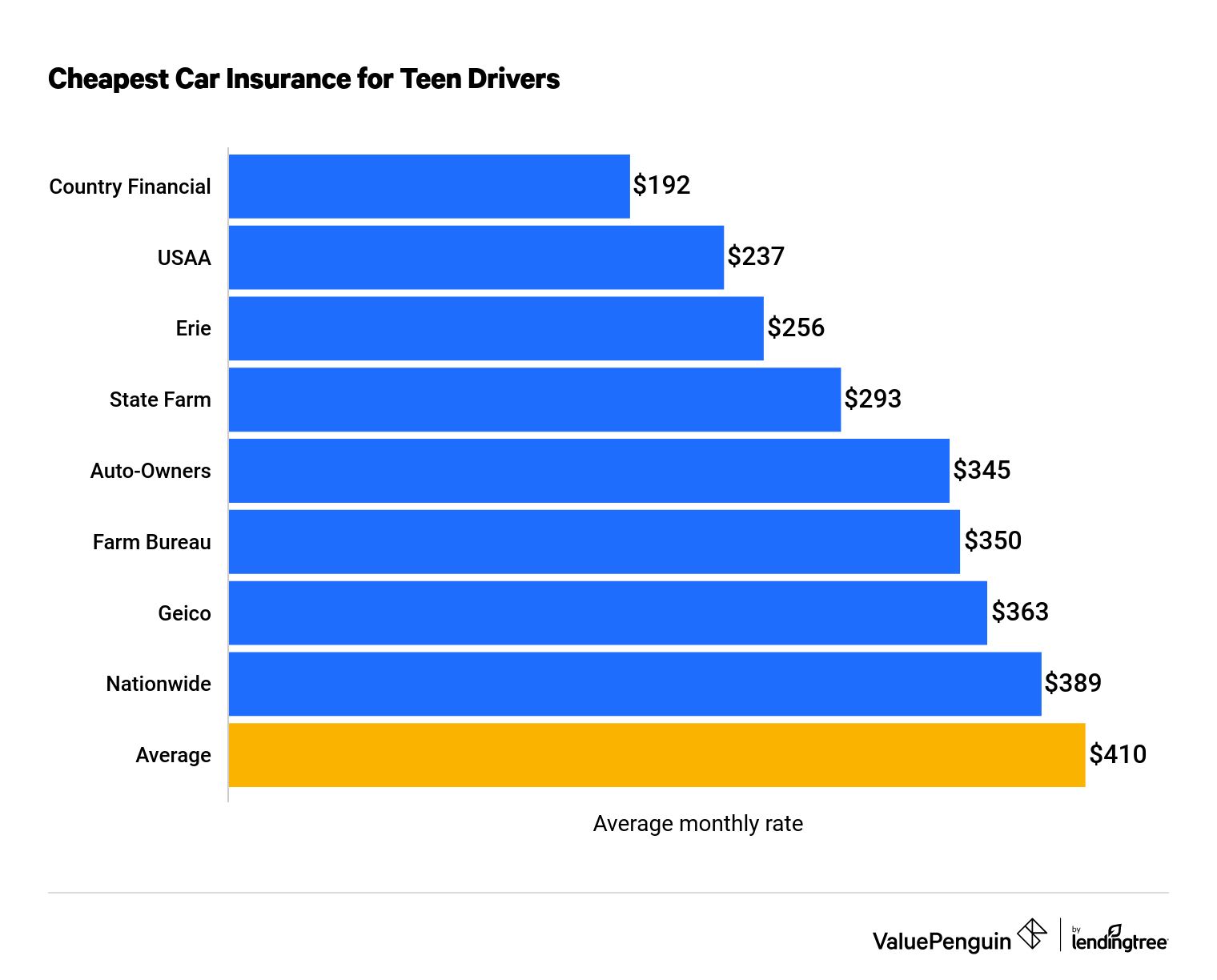Are you struggling to find affordable insurance for your teen driver? Look no further! In this article, we will explore some effective ways to save on teen driver insurance. Whether your teenager has just obtained their driver’s license or has been driving for some time, these tips will help you find the best coverage at a price that won’t break the bank. So, get ready to discover some smart strategies that will help you save money and provide peace of mind while your teen hits the road.
1. Driver Training Programs
When it comes to insuring a teen driver, many insurance companies offer discounts for completing driver training programs. These programs provide valuable education and skills to help young drivers become safer and more responsible behind the wheel. There are different types of driver training programs available, including online driver education courses, in-person driver education programs, and defensive driving courses.

1.1 Online Driver Education Courses
Online driver education courses have gained popularity in recent years due to their convenience and flexibility. These courses generally consist of interactive modules and quizzes that cover various topics such as traffic laws, road signs, and defensive driving techniques. By completing an online driver education course, not only will you learn the fundamentals of driving, but you may also be eligible for insurance discounts.
1.2 In-Person Driver Education Programs
In-person driver education programs provide a more hands-on approach to learning how to drive. These programs often include classroom instruction as well as practical driving lessons with a certified instructor. By enrolling in an in-person driver education program, you can gain valuable experience and knowledge that will not only help you pass your driving test but also potentially reduce your insurance premiums.
1.3 Defensive Driving Courses
Defensive driving courses are designed to teach drivers advanced techniques for avoiding accidents and handling unexpected situations on the road. These courses typically cover topics such as defensive driving strategies, hazard recognition, and emergency maneuvers. By completing a defensive driving course, you can demonstrate to insurance companies that you are a responsible and safe driver, which may result in lower insurance rates.
2. Good Student Discounts
Maintaining good grades in school not only benefits you academically but can also save you money on auto insurance premiums. Many insurance companies offer good student discounts to young drivers who demonstrate academic excellence. By maintaining a good GPA and meeting certain criteria set by the insurance company, you can qualify for these discounts.
2.1 Maintaining a Good GPA
One of the key factors in qualifying for a good student discount is maintaining a good grade point average (GPA). Insurance companies often require a minimum GPA, typically around a 3.0 or higher, to be eligible for the discount. By prioritizing your studies and achieving good grades, you can not only improve your academic standing but also potentially save on your car insurance.
2.2 Academic Achievement Discounts
In addition to maintaining a good GPA, some insurance companies offer discounts based on academic achievements such as being on the honor roll or winning academic awards. These additional discounts serve as incentives for students to excel in their studies and reward their dedication and hard work. By showcasing your academic achievements to your insurance provider, you may be able to secure even more savings on your auto insurance.
3. Compare Insurance Quotes
To ensure you are getting the best possible insurance rates for your teen driver, it’s important to compare insurance quotes from multiple providers. This allows you to see the different rates and coverages available to you and make an informed decision.
3.1 Utilize Online Comparison Tools
One of the easiest ways to compare insurance quotes is by utilizing online comparison tools. These tools allow you to input your personal information and driving history, and then provide you with quotes from various insurance companies. By taking advantage of these tools, you can quickly and easily compare rates and coverage options, saving you time and potentially money.
3.2 Contact Local Insurance Agents
In addition to using online comparison tools, it’s also a good idea to reach out to local insurance agents directly. They can provide you with personalized quotes and help answer any questions you may have about coverage options and discounts. By speaking with a knowledgeable insurance agent, you can ensure that you are getting the most accurate information and receiving the best possible rates for your teen driver.
4. Add Teen Drivers to Existing Policies
Adding a teen driver to an existing insurance policy can be a more cost-effective option than purchasing a separate policy. There are various ways to add teen drivers to existing policies, including multi-car policies, bundling insurance policies, and parent-child car ownership.
4.1 Multi-Car Policies
A multi-car policy allows you to insure multiple vehicles under the same policy. By adding your teen driver’s vehicle to your existing policy, you can potentially benefit from lower rates compared to purchasing a separate policy for them. Insurance companies often offer discounts for insuring multiple vehicles, making a multi-car policy a cost-effective option for adding a teen driver to your insurance coverage.
4.2 Bundling Insurance Policies
Bundling insurance policies involves combining multiple types of coverage, such as auto insurance and homeowner’s insurance, under the same insurance provider. By bundling your insurance policies, you can often receive discounts on each policy, including the coverage for your teen driver. This can result in significant savings overall while still maintaining comprehensive coverage for your family’s needs.
4.3 Parent-Child Car Ownership
Another option for adding a teen driver to an existing policy is through parent-child car ownership. This means that the parent owns the vehicle and adds the teen driver as a secondary driver. By doing so, the teen driver can benefit from the parent’s insurance history, which may result in lower rates. However, it’s important to note that the teen driver should still be listed on the policy and have appropriate coverage in case of an accident or damage.

5. Usage-Based Insurance
Usage-based insurance is a relatively new concept that utilizes technology to determine insurance rates based on actual driving behavior. This type of insurance can be particularly beneficial for teen drivers who demonstrate safe driving habits. There are two main types of usage-based insurance: telematics devices and pay-per-mile insurance.
5.1 Telematics Devices
Telematics devices are small systems that are installed in vehicles to monitor driving behavior. These devices collect data such as speed, braking habits, and the number of miles driven. Insurance companies use this data to determine insurance rates based on the individual’s driving habits. By demonstrating safe driving behavior, such as avoiding sudden stops or excessive speeding, teen drivers can potentially qualify for lower insurance rates.
5.2 Pay-Per-Mile Insurance
Pay-per-mile insurance offers a more personalized approach to determining insurance rates. With this type of insurance, drivers are charged based on the number of miles they drive. For teen drivers who may have limited driving experience or only use their vehicle for specific purposes, pay-per-mile insurance can be a cost-effective option. By only paying for the miles they drive, teen drivers can potentially save on insurance premiums.
6. Safe Driving Discounts
Practicing safe driving habits is not only crucial for your well-being but can also help you save on auto insurance premiums. Insurance companies often offer safe driving discounts to reward drivers who have maintained a clean driving record and have no accidents or violations. There are various ways to take advantage of these discounts, such as accident-free discounts, safe driving apps, and monitoring programs.
6.1 Accident-Free Discounts
Accident-free discounts are offered to drivers who have maintained a clean driving record for a specific period of time, usually three years or more. By avoiding accidents and claims, you can potentially qualify for these discounts and enjoy lower insurance premiums. Encouraging safe driving habits and caution on the road can not only keep you and others safe but can also help you save money in the long run.
6.2 Safe Driving Apps
Safe driving apps are becoming increasingly popular as a tool to promote safe driving habits. These apps use GPS and other technologies to monitor driving behavior such as speed, braking, and phone use. By using a safe driving app and consistently practicing safe driving habits, teen drivers can potentially earn discounts on their insurance premiums. These apps often provide feedback on driving behavior, allowing drivers to make necessary adjustments and improve their skills.
6.3 Monitoring Programs
Some insurance companies offer monitoring programs where drivers can voluntarily participate in having their driving behavior observed. This can be done through the installation of a small device or by using smartphone apps. By allowing insurance companies to monitor your driving habits, you can potentially demonstrate your commitment to safe driving and qualify for discounts on your insurance premiums.

7. Defensive Driving Discounts
In addition to taking defensive driving courses, there are other ways to earn discounts on auto insurance premiums. Insurance companies often offer discounts for drivers who have obtained defensive driving certifications or have completed supplemental driver training.
7.1 Defensive Driving Certifications
Defensive driving certifications are earned by completing a state-approved defensive driving course. These courses are designed to educate drivers on safe driving practices and strategies for avoiding accidents. By completing a defensive driving course and obtaining a certification, you can demonstrate to insurance companies that you have taken the initiative to become a safer driver and potentially qualify for a discount on your insurance premiums.
7.2 Supplemental Driver Training
Supplemental driver training programs provide additional education and skills beyond what is taught in standard driver education courses. These programs may focus on specific areas such as handling adverse weather conditions, night driving, or defensive driving techniques. By completing supplemental driver training, you can further enhance your driving skills and potentially qualify for discounts on your auto insurance.
8. Restricted Driving Time
Restricting the driving time for teen drivers can not only help promote safe driving habits but may also result in lower insurance premiums. There are various ways to limit driving time for teen drivers, including curfew restrictions and limiting nighttime driving.
8.1 Curfew Restrictions
Implementing curfew restrictions for teen drivers can help reduce the risk of accidents during high-risk times. Many accidents involving teen drivers occur during late-night hours, so setting reasonable curfews can significantly decrease the likelihood of incidents. Insurance companies may offer discounts for vehicles under curfew restrictions, as it demonstrates a proactive approach to reducing risk.
8.2 Limiting Nighttime Driving
Alongside curfew restrictions, limiting nighttime driving for teen drivers can also contribute to safer driving habits. Insurance companies often consider nighttime driving to be riskier due to reduced visibility and increased chances of encountering impaired drivers. By implementing restrictions on nighttime driving, you can potentially qualify for lower insurance premiums, as it demonstrates responsible behavior and reduces the likelihood of accidents.

9. Vehicle Safety Features
Equipping your vehicle with advanced safety features can not only enhance your safety on the road but may also qualify you for insurance discounts. Insurance companies often offer discounts for vehicles equipped with anti-theft systems and safety technology.
9.1 Anti-Theft Systems
Anti-theft systems are designed to deter theft and unauthorized access to vehicles. These systems can include features such as alarms, immobilizers, and GPS tracking. By installing an anti-theft system in your vehicle, you can reduce the risk of theft, potentially lowering your insurance premiums.
9.2 Safety Technology
Modern vehicles are equipped with advanced safety technology that can help prevent accidents and minimize the severity of collisions. Features such as adaptive cruise control, lane departure warnings, and automatic emergency braking can significantly improve the safety of your vehicle. By having these safety features installed in your vehicle, you can potentially qualify for insurance discounts, as it demonstrates your commitment to safety on the road.
10. Raise Deductibles and Coverage Limits
Adjusting your deductibles and coverage limits can be a strategic way to potentially save on auto insurance premiums. By understanding the impact of deductibles and coverage limits on your premiums, you can make informed decisions based on your risk tolerance and financial situation.
10.1 Effect of Deductibles on Premium
A deductible is the amount you are responsible for paying out of pocket before your insurance coverage kicks in. Generally, higher deductibles result in lower insurance premiums, as you are assuming more of the financial risk in the event of an accident or claim. By raising your deductibles, you can potentially lower your premiums, but it’s important to ensure you can comfortably afford the deductible amount if needed.
10.2 Adjusting Coverage Limits
Insurance coverage limits refer to the maximum amount your insurance company will pay out in the event of a covered claim. Adjusting your coverage limits can affect your insurance premiums. Higher coverage limits generally result in higher premiums, as you are increasing the amount your insurance company would potentially have to pay. By carefully evaluating your coverage needs and adjusting your coverage limits accordingly, you can strike a balance between adequate protection and affordable premiums.
In conclusion, there are multiple strategies you can utilize to save on teen driver insurance. Driver training programs, good student discounts, comparison shopping, adding teen drivers to existing policies, usage-based insurance, safe driving discounts, defensive driving discounts, restricted driving time, vehicle safety features, and adjusting deductibles and coverage limits are all effective ways to potentially reduce your auto insurance premiums. By implementing these strategies and maintaining safe driving habits, you can provide your teen driver with the necessary coverage while finding ways to save on insurance costs.



